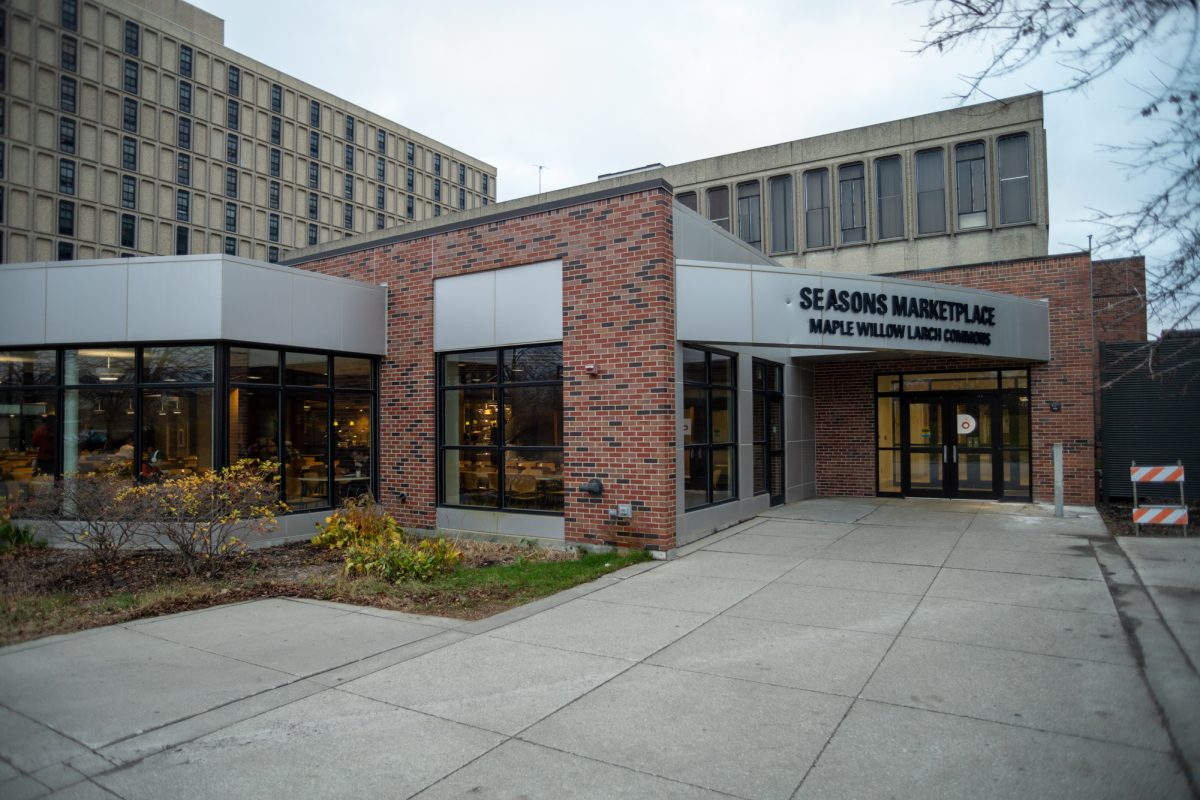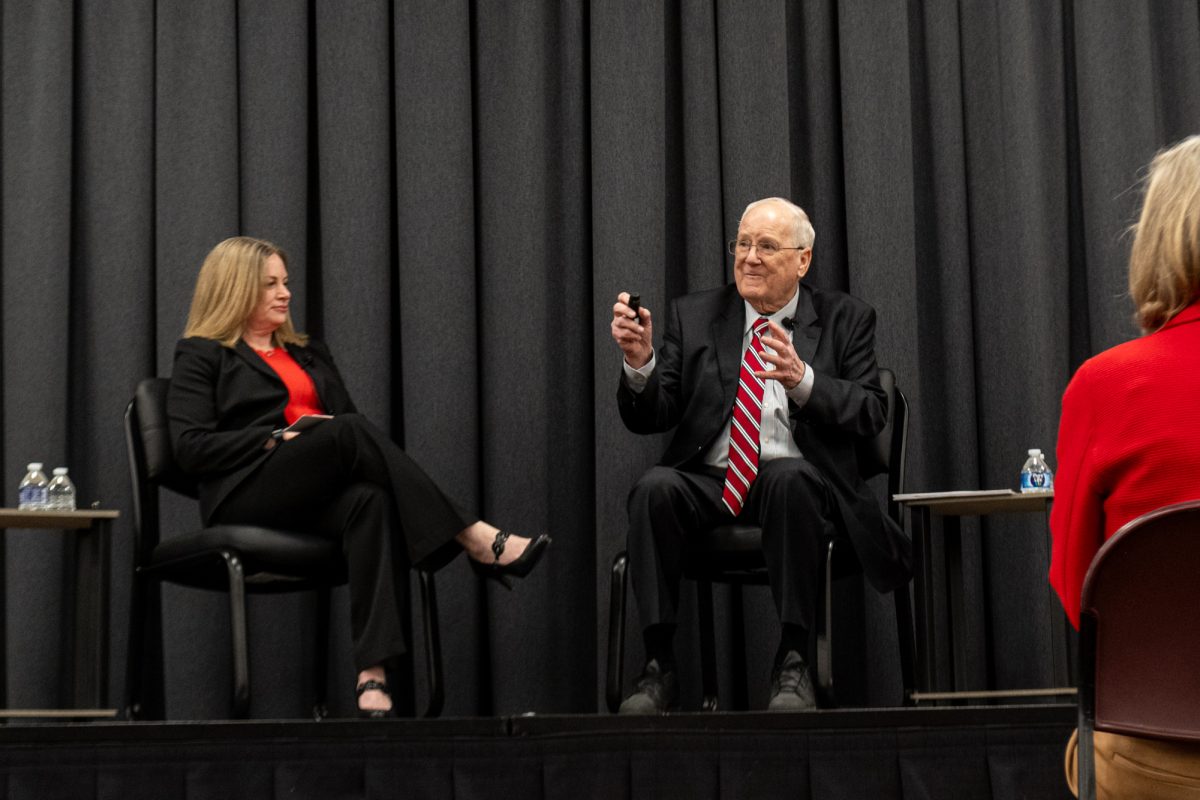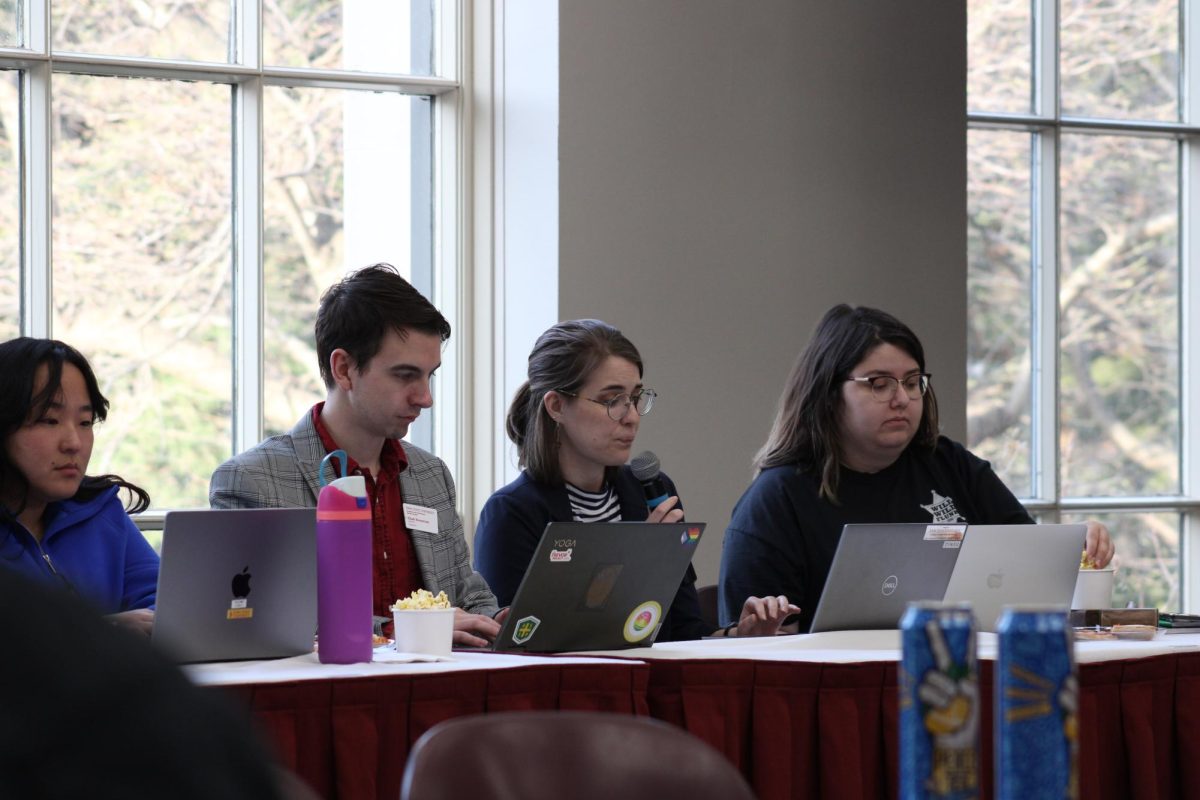- News
- News / Politics And Administration
- News / Politics And Administration / Campus
- News / Student Life
StuGov reiterates state fault, tuition plan “only a proposal”
August 10, 2017
Student Body President Cody West and Vice President Cody Smith released a statement Thursday in response to the proposed 5-year plan for tuition increases for resident and non-resident undergraduates. Their statement reinforced that the plan was only a proposal, not approved, and that the body behind the need for tuition increases is the state legislature.
Wednesday, Interim President Ben Allen presented a proposal to the Board of Regents’ Tuition Task Force. After two rounds of state fund cuts totaling more than $30 million, the Board formed the task force to stop the cycle of raising tuition at the last minute. The task force asked the three public Iowa universities to draft a plan for funding needs and tuition.
“The time has come that we move past pointing fingers at the university administration and the Iowa Board of Regents and demand that our state legislators make higher education a priority again in Iowa. We have said it before and we will say it again, an investment in the students of Iowa State University is an investment in the future of our state and our nation,” the joint statement from West and Smith said.
The proposal Iowa State presented focused on what it would take to fund the resources needed to maintain and grow the quality of an Iowa State degree and to meet certain goals: to recruit and hire 330 new faculty and staff, to meet deferred maintenance needs and to grow the university 900,000 square feet so resources can serve at capacity.
“We want to reiterate to the students of Iowa State University that this is only a proposal,” the joint statement from West and Smith said. “No official action has been taken by the Board of Regents and the proposal will be discussed extensively over the next academic year.”
The tuition proposal has an annual 7 percent increase for resident undergraduates, an annual 4 percent increase for non-resident undergraduates, and differential adjustments for engineering, business and additional STEM programs.
This comes out to an increase on the base tuition of $522 dollars in fall of 2018 and $684 increase between fall of 2021 and fall of 2022. Non-residents see an increase of $852 in fall of 2018 and $996 dollars between fall 2021 and fall of 2022. Graduate costs, international student costs and the differential tuition cost would all be added to that base level.
Both West and Smith had been asked to speak in the public input part of the meeting with the task force. Smith didn’t see the university’s plan until the meeting.
“At one point I said ‘this plan is great, because it’s a plan,’ and I mean that in we finally have something at least to talk about,” Smith said in an interview with the Daily. “I think a lot of people misconstrued that as ‘I love 40 percent tuition increases’ cause that’s not [true].”
Smith said he viewed the plan as a wish list for Iowa State.
“I’m pretty positive it’s not going to go through in that same form,” Smith said. “We’ve had some talks about accessibility versus quality, and I think that is a tricky situation right now because obviously we want to have that ratio, we want to have good classrooms on campus and square footage for faculty but it’s give and take.”
West agreed.
“It goes back to the land-grant mission and whether our priority is to provide Iowans that high quality education, but that can’t come at the cost of allowing less and less students to go to college due to the financial burden it puts on them and their families,” West said. “I think that’s going to be a really delicate balance we have to strike.”
West and Smith had voiced concerns in previous meetings on tuition raises that resident students were always shielded from the tuition burden more than other students.
West had said previously that raising tuition an equal percentage for residents and non-residents “sends a powerful message to the State legislature that we are no longer going to give the break to resident students if our state government continues to show that higher education is not a priority.”
What makes this proposal different is the percent increase for residents is nearly double that of a non-resident student – although the dollar amount comes out to be closer to half.
“But that number’s big for a resident student, especially a resident student who Iowa State looks like an affordable option for right now, it may not be that affordable in five short years,” West said.
For Smith, the most important thing was understanding who was responsible.
“I’m super frustrated we’re even put in this situation. If you get on Twitter or on social media at all, you see ‘the regents did this’ or ‘the administration did this’ or we [Cody and Cody] did this, and I think that’s the most frustrating thing,” Smith said. “The people who are putting us in this situation are the legislators. They canceled the task force meeting for legislators because nobody showed up.”
Students can express their concerns and share their input by emailing stugov@iastate.edu or by contacting the senators that represent their college or housing area.





